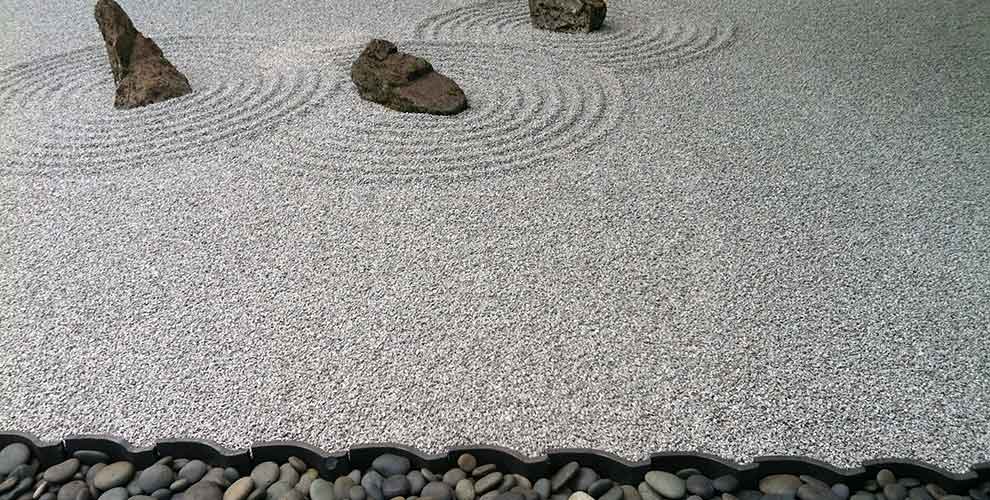Japanese gardens
Knowing how and where to place primary and secondary garden elements is crucial when creating a Japanese garden. Primary garden elements here are stones, water and plants; secondary- bamboo fencing, bridges, bells and ornaments. Such gardens are asymmetrical and natural, contain elements with symbolic meaning. Japanese garden represents two opposite forces- yin(water) and yang (stones). Japanese garden evoke feelings of stillness and security. Garden can be of different sizes, flat or knobby. The main requirement is not to overload the garden with unnecessary elements.
 Image source: Flickr
Image source: Flickr
Japanese landscape design has deep symbolic meaning. It symbolizes selected aspects of nature in a few well-considered brushstrokes and provides a focus for contemplation and meditation, being a never-ending source of inspiration. Japanese garden design is about retreat and ritual purification. Careful positioning of rocks, ornaments and plants creates a narrative structure, ‘flow’ being an essential element. In Japanese culture garden is decorative all year round. It is especially stunning in spring, when blooming plants and trees satiatethe garden with colors and then change the foliage in autumn.
Zen garden
Japanese rock garden (zen garden) can consist only of rocks, gravel and sand. This type of garden is intended for meditation and retreat. Zen garden is unique, and according to Japanese culture can’t reoccur in other places.
Image source: Flickr
Rocks can be tall or short uprights with vertical strata suggesting waterfalls, they can recline like resting human figures, animals, birds, the sky and the earth, or be flat, solid and grounded. Rocks in Japanese garden can tell countless stories and evoke a strong sense of place. Sink them at least one-third into the ground for visual balance and use uneven numbers. For Zen garden natural gravel, basalt or andesite stones will work best. Shapes, textures and colors should correlate among each other and complement Japanese garden landscape design. Stones can be covered with moss, which adds specialcharm to the garden.
Water and plants
Water features in Japanese gardens have irregular shape and can be either natural or introduced with a stone basin. Sand or gravel can also imitate water in Japanese garden, being either astream, waterfall or lake. Natural ponds with smooth shorelines are quite usual in Japanese gardens. Still water provides a focus for contemplation and retreat.
Green, gray and brown colored plants work well in Japanese-style garden. Garden plants for Japanese gardens usually have monochromatic leaves and modestly brightflowers. The following perennial herbaceous Japanese garden plants-iris, astilba, hosta, fern and chrysanthemum work really well. Of the deciduous trees, consider cherries, maples and pines; such shrubs as azalea, euonymus and barberry will also look stunning. Miniature wood of bonsai or pruned to scale and trained to look windswept trees are very popular in Japanese landscape design.
Image source: Flickr
Japanese rock garden (zen garden) can consist only of rocks, gravel and sand. This type of garden is intended for meditation and retreat. Zen gardenis unique, and according to Japanese culture can’t reoccur in other places. Rocks can be tall or short uprights with vertical strata suggesting waterfalls, they can recline like resting human figures, animals, birds, the sky and the earth, or be flat, solid and grounded. Rocks in Japanese gardencan tell countless stories and evoke a strong sense of place. Sink them at least one-third into the ground for visual balance and use uneven numbers. For Zen garden natural gravel, basalt or andesite stones will work best. Shapes, textures and colors
Lighting and ornament
Japanese garden ornaments are made of wood, bamboo or natural stone. Traditional artefacts include statues of Buddha, animals (lions, turtles and cranes), mythical creatures (dragons) and miniature pagodas.
Image source: Flickr
Ornament complements the philosophy of Japanese rock garden. For instance, turtle is considered to be a symbol of longevity and wisdom; lion protects the territory from negative energy. Lanterns have geometric forms (circle, triangle and square) and are placed near the ornaments and along the pathways. Placing the lanterns in Japanese garden near Buddhastatue symbolizes the light of knowledge and buddhism doctrine.